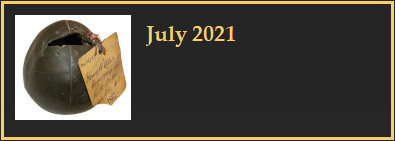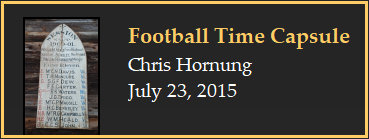
Football and the American Civil War
Chris Hornung
July 1, 2021
July 1, 2021







First Hand Account


One of the only known accounts of football in Civil War camp was written by Silas Baxter, a cavalryman in "Scott's 900,"at Camp Relief, Washington, D.C. on April 3, 1863. Baxter, from Susquehanna, Pennsylvania, enlisted with the 11th New York Cavalry in January, 1862, and arrived in Washington in May. Named after the regimental commander Colonel James B. Swain's wife, Relief Swain, Camp Relief was located near present day Mount Vernon Square. The men of Camp Relief played a pivotal role in defending the capital, serving as capital police, reconnoiting enemy positions, and most importantly, protecting Abraham Lincoln and Congress.
In the letter to his family, Baxter describes daily camp life, "our regiment is drilling most every day till they went to build the barracks but now we have nothing but dress parade at five o’clock and after that we play ball till roll call.” He also describes his health, "I am as well as usual with the exception of a lame foot that I got a playing foot ball a couple of weeks ago but it is getting most well now so that I can do duty again but it gave me a great deal of pain at first."
In the letter to his family, Baxter describes daily camp life, "our regiment is drilling most every day till they went to build the barracks but now we have nothing but dress parade at five o’clock and after that we play ball till roll call.” He also describes his health, "I am as well as usual with the exception of a lame foot that I got a playing foot ball a couple of weeks ago but it is getting most well now so that I can do duty again but it gave me a great deal of pain at first."
It is understandable why military leaders would promote football competitions in camp. Drills and dress parades reinforced rules of engagement and improved readiness, however, sport provided a positive, competitive outlet that built teamwork and maintained and encouraged physical fitness. While these games did lead to injuries, such as Baxter's lame foot, commanders must have believed the benefits of the contests outweighed the potential reduction in their forces.
Inter-Regimental Contests
An image featured in the July 15, 1865 Harper's Weekly entitled "Holiday in Camp - Soldiers Playing Foot-Ball [sketched by Winslow Homer]," depicts a huge mob of soldiers focused more on kicking and hitting their opponents than on locating and advancing the ball. While there is no specific documentation of inter-regimental competition, it's logical to assume that fierce contests between companies and regiments from different regions of the country took place.


1867 Alden Patent
"Covering for Foot-Balls"
After the war, soldiers returned home to their respective parts of the country and helped change societal attitudes towards sports. War veterans serving as boarding school headmasters and college educators promoted sports as a means to instill teamwork, sacrifice, and strength of body and character. Leaders who had experienced the horrors of war understood that "young men could learn the hard lessons of war and develop tough moral character through a battle on the playing field without the actual bloodshed and death of armed conflict (Fredrickson, 1965, 218-25)." Incrementally, prohibitions against leisure time competitive games were lifted and attendance at organized sporting events grew. By the mid-1870's, interscholastic and intercollegiate football games were commonplace and the need for codified rules and organized leagues led to the creation of the Intercollegiate Foot Ball Association in 1876. In an 1898 article, Harper's Weekly made the claim that “the value of football as a means of keeping alive a martial spirit in time of peace has been abundantly dwelt upon,” and that “veteran football-players would be expected to excel … if war came.”
During the engagement Scott's 900 suffered 3 deaths, 15 wounded, and 55 captured by a superior Confederate force. By 1864 the regiment was transferred to the Department of the Gulf, seeing action in La Fourche and Baton Rouge, Louisiana.
On December 22, 1864, injured soldiers from Scott's 900 boarded the steamship North America bound for New York from New Orleans. The ship sank off the coast of Georgia and nearly 200 men drowned. Fortunately for Baxter, he was not onboard the North America. He was transferred with the rest of the regiment to the Department of the Cumberland, and mustered out of the army in July, 1865 at Memphis, Tennessee.
On December 22, 1864, injured soldiers from Scott's 900 boarded the steamship North America bound for New York from New Orleans. The ship sank off the coast of Georgia and nearly 200 men drowned. Fortunately for Baxter, he was not onboard the North America. He was transferred with the rest of the regiment to the Department of the Cumberland, and mustered out of the army in July, 1865 at Memphis, Tennessee.
Our story on a Civil War era football:
A relic's insight on the formative years of football:
Epilogue
Less than 3 months after writing his letter to home, Baxter's Company C engaged in battle with Confederate forces near Fairfax, Virginia.
The Impact of War

Questions or comments? Please email me at: